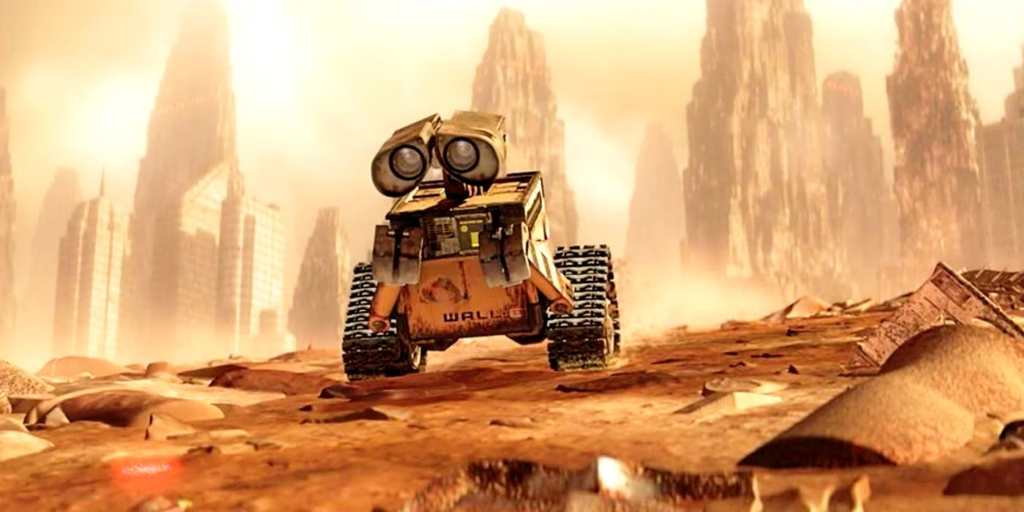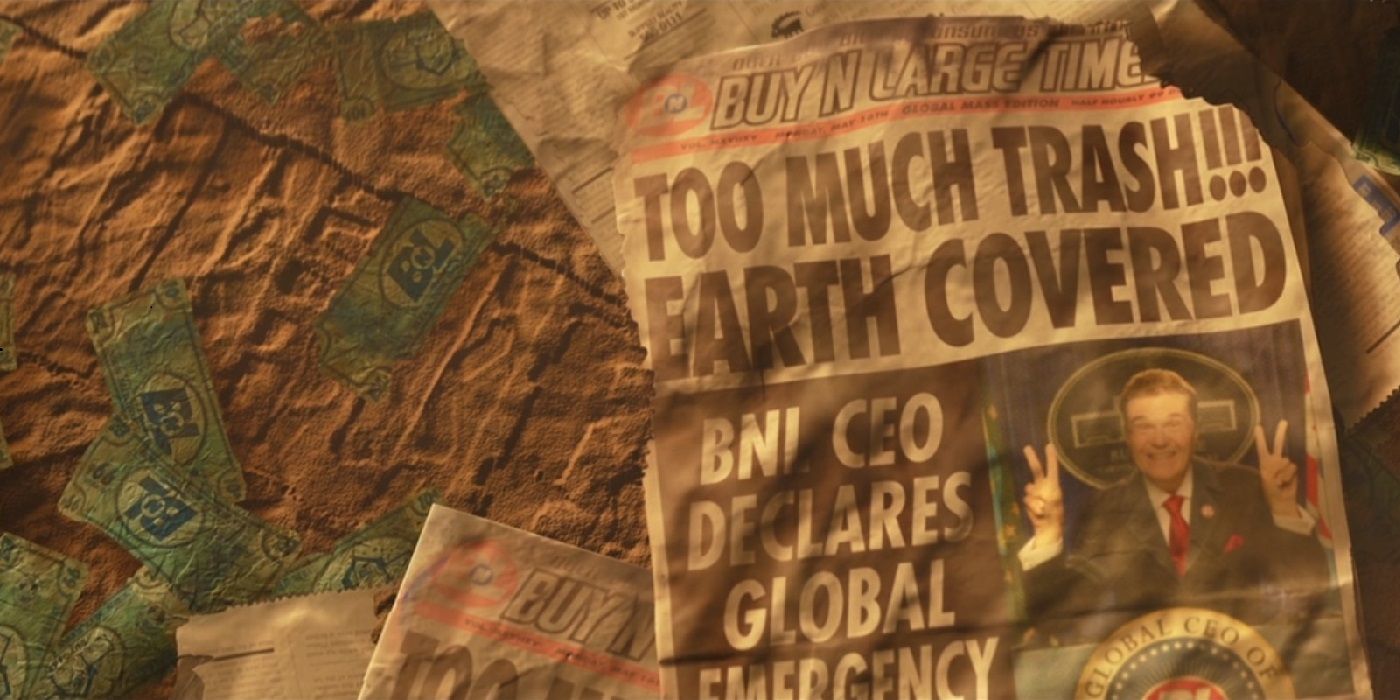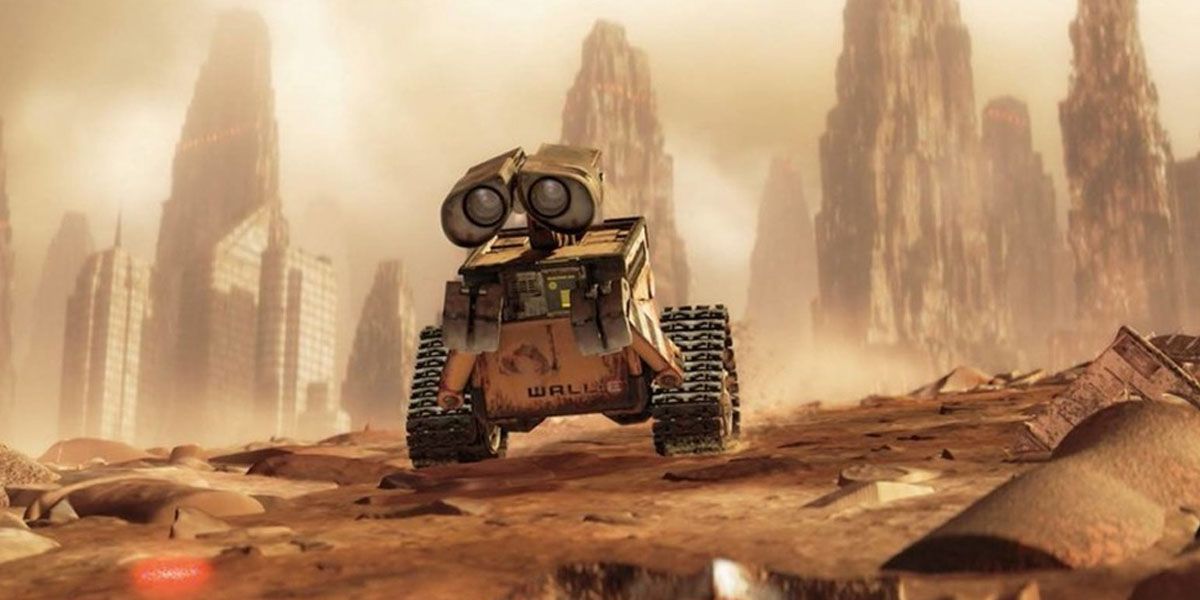WALL-E presents some unsettling images of Earth 700 years in the future: uninhabited cities built out of infinite fields of garbage; a planet devoid of human civilization; a landscape in which the color green has been removed from the spectrum; and one robot that rules all. It only takes a minute to realize that WALL-E is not your typical kid’s movie.

Clues to Humanity’s Fate Are Scattered Throughout WALL-E
WALL-E’s timeline reveals many of the details early, with seemingly incidental nuggets that later draw attention to humanity’s fate. WALL-E takes an excursion early on into a bulk store called “Buy n Large,” which seems to be the only company of any sort. Their logo is on products of every variety — billboards, transit centers and even the money — while a headline from the “Buy n Large Times” declares the Earth covered in trash.
Humanity apparently consumed itself into oblivion, with a single giant corporation taking over the world government and selling garbage to its populace until the trash overwhelmed them. BnL then built a series of outer-space cruise ships designed to maintain humanity in comfort among the stars until its WALL-E units could finish cleaning up the garbage. Centuries later, humanity is nowhere to be seen, and only one little robot continues diligently doing his job.Humans Failed to Learn From the Lessons of the Past

When WALL-E finally arrives at one of the cruise ships, he finds its inhabitants sedentary blobs: dangerously overweight, barely able to move and carted around on lounge chairs while the ship and its robotic crew attend to all their needs. That, in turn, reveals a darker conspiracy. Though the “cruise” was only intended to be five years, BnL declared the Earth uninhabitable and told the AI running the ship to keep the humans there indefinitely. The return of plant growth to the Earth is intended to finally end that cycle, but with the leaders of BnL long dead, no one can tell the AI to change its program.
The novelty of the scenario is notable. The planet’s collective doom comes not in nuclear war or climate change but in materialism gone berserk. The species endures only as never-ending generations of couch potatoes, consuming the products of a company that effectively ceased to exist long ago. WALL-E — having developed a soul and a spirit of adventure somewhere amid the wreckage — arrives not to avenge or save them but to reawaken their curiosity about the world and return home to start again. Images amid the credits speak to the brighter, happier future they create.
Source:

